
If you weren’t lucky enough to have been raised in a hands-on gearhead family, tearing into your first project car can be a daunting task. So, on the back of our Young Street Machine of the Year competition, we thought we’d compile some quick and easy workshop tips that novices may find useful when spinning spanners on their rides.
One bloke who has more projects on the go than most is Scott Barter, whose ’56 Chevy pick-up featured in the SM 2020 Yearbook. Here, he shares some of his greatest hacks for newbies, and we’ll also add a few of our own.

1. Hang it up
Keeping your work area organised is a key part of a successful build. A clear workspace means you’re not tripping over stuff while trying to cut some metal to fit a doohickey to a whatsit. Having measuring and marking tools and your personal protective equipment (PPE) in one close-at-hand spot is also a great idea.
If you have a workbench where most of your jobs will be done, you’ll want to hang all the stuff there that you’ll need to grab in a pinch. Attaching welding mesh to your workbench is a great, cheap way to sort this out, as it offers versatile mounting options.
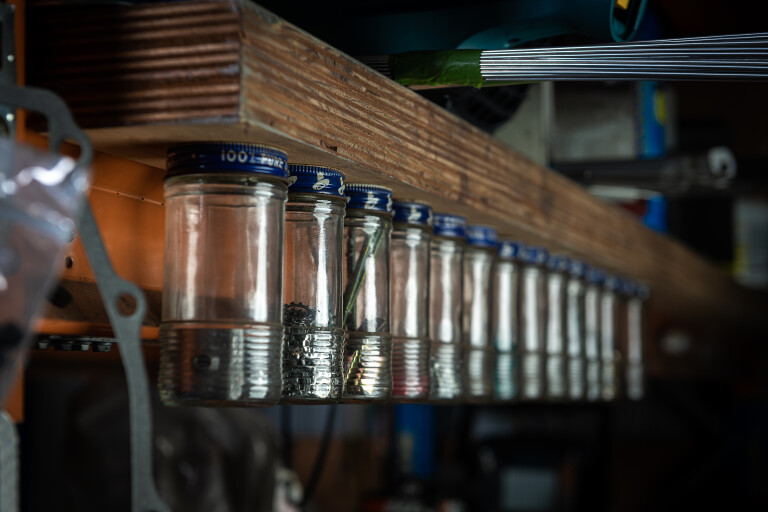
If you’ve got a solid spot above your workbench that you can bolt a timber 4x2 into, it can be a great place to hang jars to hold screws, nails, staples and other small fittings.
These jars in Scotty’s shed are kept within easy reach for when he needs to make a tool or quickly fasten something.
2. Fully primed
Every engine needs an amount of oil pressure before you kick it in the guts, Barry, and it is actually easier than you may think to build your own oil-pump priming tool.

I made this piece by MIG-welding a sacrificial half-inch socket to a busted distributor I got free of charge. This let me slap a drill on top and build oil pressure in the Pontiac engine I’d had rebuilt but then let sit for a few years.
If you’re working with an engine of unknown history, putting an oil pressure gauge on a port and spinning the oil pump up will ensure you’re not risking dry bearings on fire-up.
It’s also a good idea to pull the sparkplugs out of an old mystery engine to squirt a little auto trans fluid into each bore. Let it soak for an hour before carefully trying to spin the engine over by hand. This reduces the risk of a piston ring sticking in the bore and shredding a slug.
3. Pitch perfect
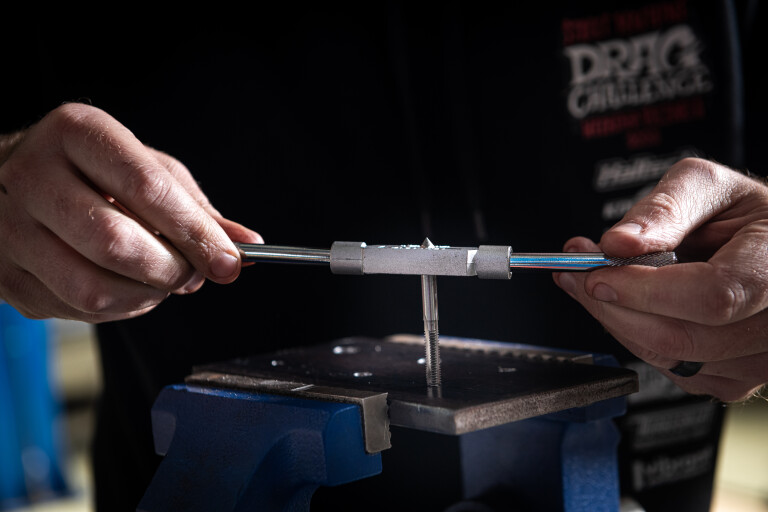
If you've bought someone else’s boxes of disassembled mystery, you might find you’ve got a lot of mixed-up bolts and nuts. A quick way to work out what’s what is to build your own nut-and-bolt-checker, which will let you quickly check the size and pitch of the fasteners you’re handling. This way you can sort stuff into like groups rather than keeping them mixed together in a big bucket.
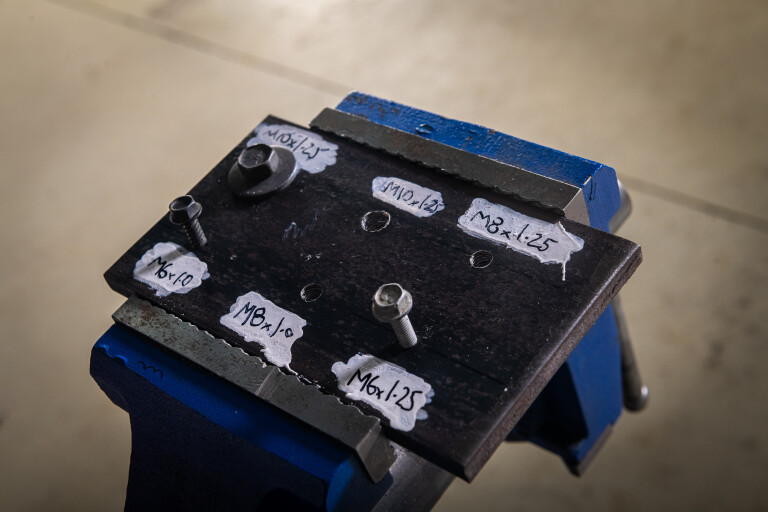
A good set of metric and imperial taps and dies is also something everyone getting into project cars should have under their workbench.
4. Simple siphon
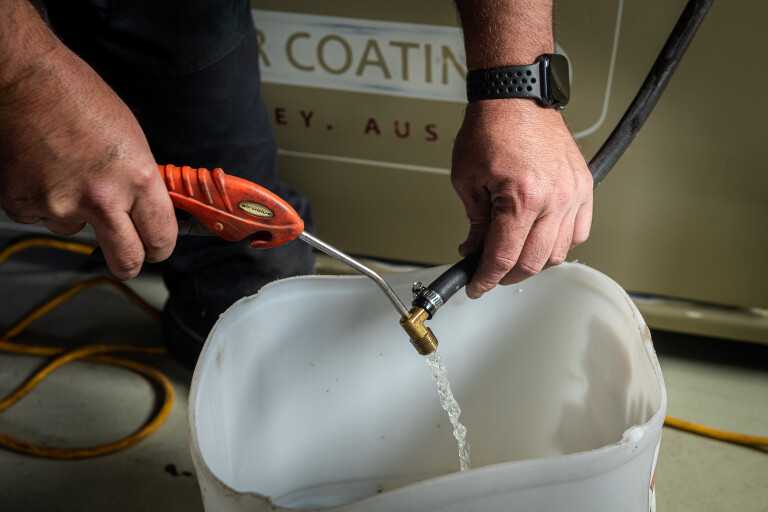
At some point, you’ll have to deal with the curse of stale fuel. This stinky stuff will have your car running rougher than two-grit sandpaper, so Scotty came up with a brilliant, fast and mess-free way to drain a petrol tank. He simply drilled a hole in the elbow of a 90-degree brass fitting.
When it’s time to siphon fuel, he runs a hose from one end of the fitting into the fuel tank (keeping the elbow below the height of the tank), and another hose running from the other end of the fitting into a bucket. He then fires compressed air into the elbow hole to instantly start the siphoning process.
5. Smokin'
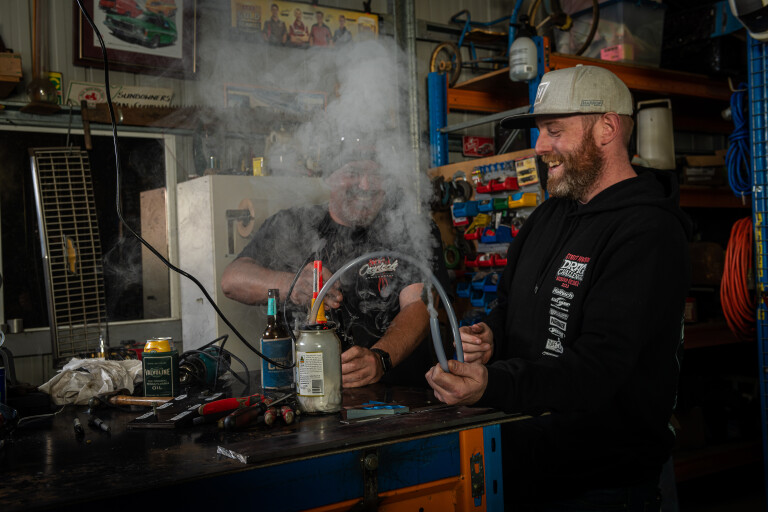
Engines that have sat around since Jesus played fullback for Jerusalem often suffer from rotted gaskets and hoses. Chasing vacuum leaks is about as much fun as picking a broken nose, so build your own leak tester using a jar, some plastic tubing, a bicycle pump and a cheap soldering iron.
Drill three holes in the lid of the jar to fit two bits of tubing and the soldering iron. Make sure these fit perfectly in their respective holes to form an airtight seal. Connect one tube to a bicycle pump and run the other tube into the engine’s throttlebody or carburettor, past the throttle blade; make sure this also forms a seal.
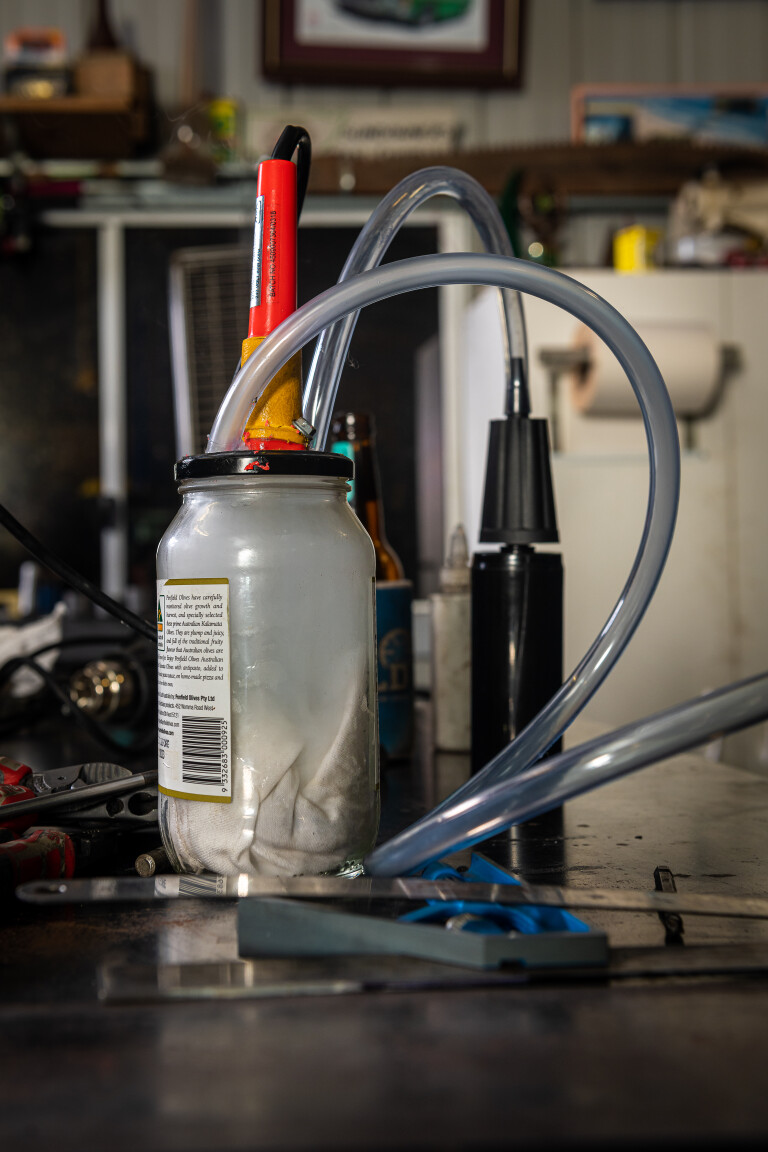
Soak a rag in mineral oil (baby oil is a cheap, non-smelly option here), drop it in the jar and put the lid back on (with the tubing and soldering iron in their holes). Fire up the iron, and once it’s hot enough, the inside of the jar will smoke like Keith Richards on a Friday night.
Use the bike pump to move the smoke up the tube, and, so long as you have the system sealed, the smoke will eventually start pouring from your leak.
6. Future planning

If you haven’t ever pulled a car apart yourself, take a tip from your friendly local pirate and draw a map. You can lay out the steering, electrical or brake system components and draw a schematic of how they all fit together. This way you’ll have a reference when you start putting your car back together months (or years) later.
7. Save your back
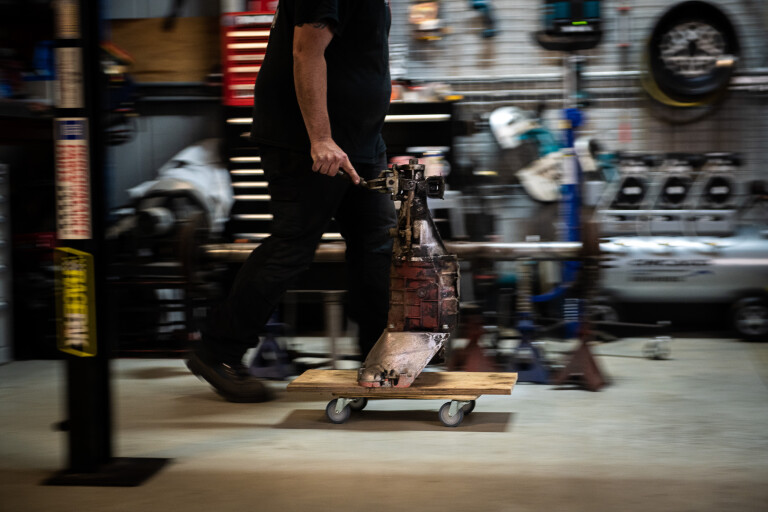
Most large hardware chains sell small moving dollies, which are excellent for moving and storing heavy, awkward items like engine blocks or transmissions. In this shot, Scotty has added a layer of security against tip-overs by running a bolt and washer through the bellhousing and into the trolley bed.
8. Soften the blow
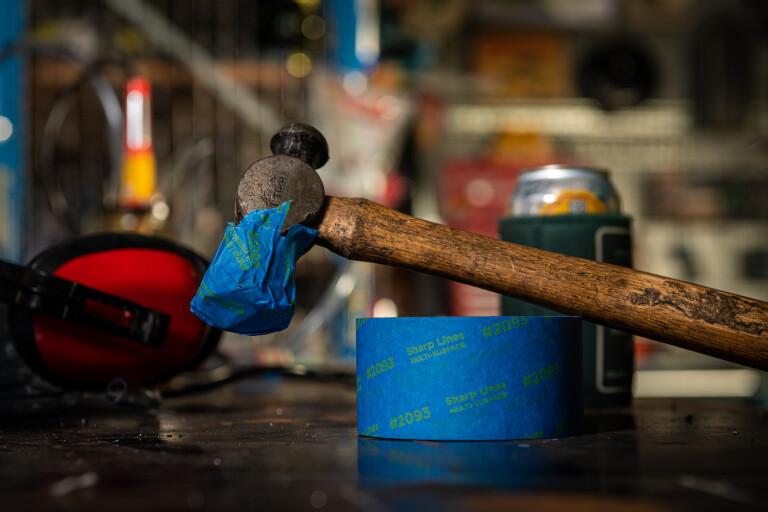
If you can’t fit a mallet into the space where you need to whack, add five or six layers of masking tape to the face of a hammer to soften its blows. Taping a doubled-up microfibre rag over the end can also work in a pinch.
9. Buy two grinders
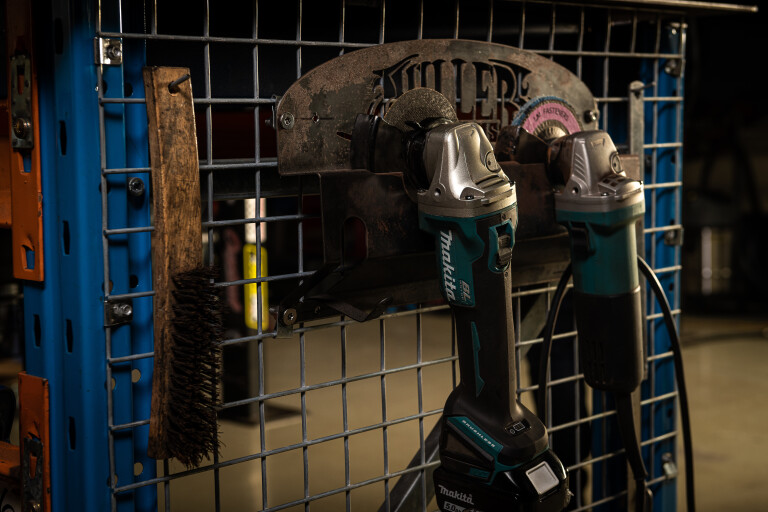
If you'll be doing a lot of fab work, invest in two grinders. Scotty has one of his set up for cutting, while the other has a flap disc to smooth edges, welds or strip surface coatings he’s about to weld. This means he doesn’t have the hassle of swapping different discs on and off one grinder – a handy time-saver when you’re building an entire car. Similarly, having your drill bits laid out in a toolbox drawer makes it easy and quick to pick the right-size bit.
10. Power up
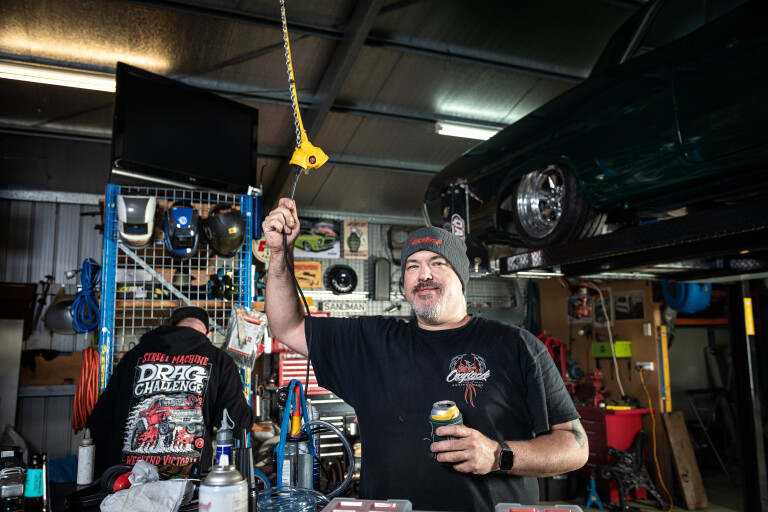
t's just about impossible to have too many power outlets in your shed. Scotty reckons hanging a power outlet over his fab bench was one of the best things he has done to set up his shed, as it means he isn’t tripping over extension leads or having to hunt for a spare outlet.
Ok, that's ten tips! Here's a bonus:
11. SOAK YOUR BOLTS
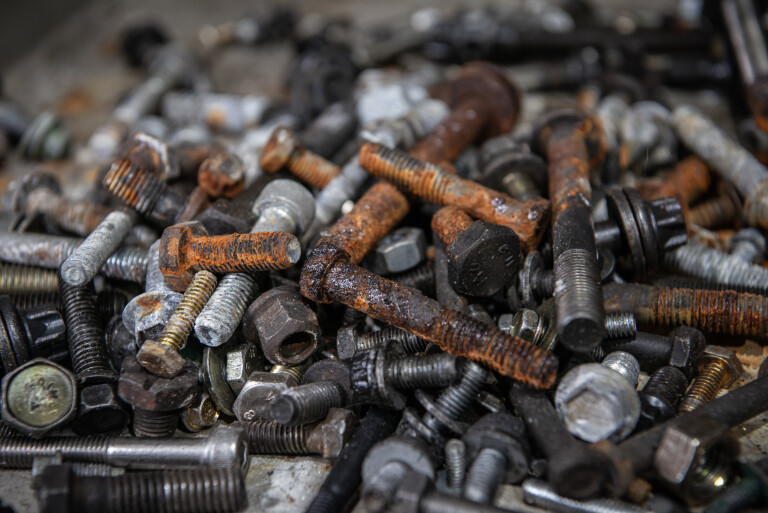
Rusty, rounded, snapped or threaded bolts and nuts will probably be the most frustrating, time-wasting issues you’ll encounter with a project car. Loosen things up by liberally spraying rusty fasteners with a high-quality penetrant spray like Inox Black or PB B’laster and leaving them to soak. Also, try undoing them with a six-sided socket on a long breaker bar rather than using power tools.

COMMENTS